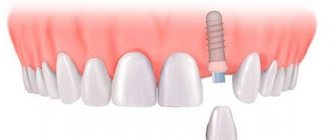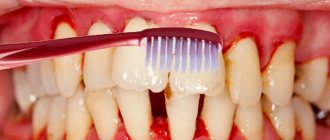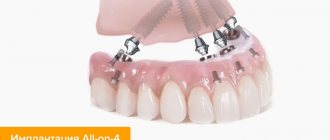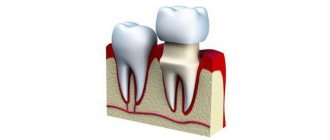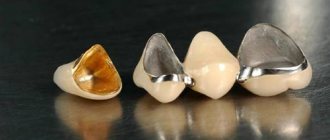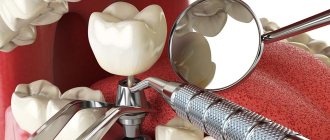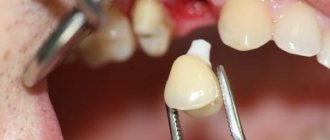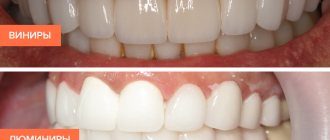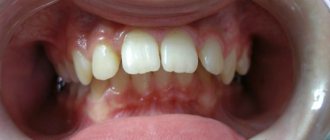6958
A tax deduction (TD) in a narrow sense is the return by the state to the taxpayer (individual) of a certain amount of money from the income tax previously paid by him.
NV is a social protection measure for citizens aimed at reducing costs for expensive services that a person cannot do without.
Who is eligible for a tax deduction for dental implants? How much money can you get back, and how can you do it practically? This will be discussed below.
Are metal veneers an expensive treatment?
If patients encounter such unlawful demands, I recommend that they and the tax inspector familiarize themselves with the material in this article.
All questions are immediately removed. An important question: is it necessary to detail the list of services provided in order to receive a tax deduction? Government agencies should share this information with each other automatically through interdepartmental interaction channels. The Federal Tax Service is obliged to independently obtain information about the clinic’s license in the Roszdravnadzor register, and not demand it from the clinic or the patient.
Expensive treatment: list for 3 personal income taxes
The maximum deduction amount is 120 thousand rubles. This restriction applies to all types of payments (pension contributions, training). Costs exceeding this limit are considered expenses for expensive treatment. There are no government restrictions on them. The deduction is calculated based on the entire amount of expenses spent on medicines.
The taxpayer can receive a deduction for expensive dental treatment. The list of medications for 3-NDFL is presented in Resolution No. 201. The document does not list trade names, but international nonproprietary names. That is, the names of the drugs may not visually match. The list also contains commonly used drugs. If the prescribed medicine is not included in the list, then the deduction will not be prescribed.
Documents for tax deduction for dental treatment in 2016
So, you have the right to a tax deduction for dental treatment - what documents are needed in order to take advantage of it? To eliminate claims from tax authorities and not waste time providing missing documents, we recommend that you prepare the following list of documents:
- passport of the citizen for whom the deduction is issued - he is also the payer of medical services;
- children's birth certificate, marriage certificate, taxpayer's birth certificate - if a family member was treated and the deduction is issued to a parent, spouse or adult child;
- declaration 3-NDFL;
- 2-NDFL certificates from all places of work of the taxpayer;
- application for income tax refund - in it you also indicate the details of where to transfer the money;
- contract for the provision of medical services with all additional agreements;
- a copy of the license to carry out medical activities;
- certificate of payment for treatment - if the treatment is expensive, then the service code is 2. If the treatment is not included in the list of expensive ones, then the code is 1.
- checks and other payment documents that confirm the fact of payment.
We remind you! You irrevocably provide certified copies to the inspectorate, and tax officials review the originals in your presence.
If a deduction is provided for the treatment of a relative, then payment documents, contracts, and income certificates must be issued to the recipient of the deduction, and not to the patient.
Documents for a tax deduction for dental treatment can be submitted to the Federal Tax Service in person, through an authorized person (with a notarized power of attorney) or sent by Russian Post. We recommend that you deliver the documents in person so that you are immediately aware of possible shortcomings and do not waste time correcting them.
Expensive treatment list for 3 personal income tax dentistry
To determine which category of medical services belongs to - expensive or ordinary, you need to familiarize yourself with List No. 201 dated March 19, 2001. The cost of treatment is secondary - the main thing is that in the official certificate form (put into effect by Order No. 289 / BG-3 -04/256 dated July 25, 2001) code 2 was indicated, identifying it as an expensive treatment. Additionally, in addition to the price of the treatment itself, you can apply for a deduction from the cost of medications if a person buys them on his own.
If you are submitting a document about the treatment of your parents, you must not only provide the birth certificate of the child submitting the declaration, but also his marriage certificate in case of a change of surname. You will also need a prescription for medicines, stamped for the tax authorities of the Russian Federation, if the return is for barely karst, as well as checks and receipts for medicines and other medical supplies.
Tax deduction for dental implantation and prosthetics
- in the clinic where the treatment was carried out, you must obtain a certificate (according to the established form - the form is approved by the Ministry of Health of the Russian Federation), it must indicate the cost of treatment, a list of operations, manipulations and other services performed
- A package of documents should be submitted to the tax service at your place of residence: a certificate of the cost of services from a medical institution (original or copy), an agreement with the clinic for the provision of services with a detailed list of them (original or copy), a certificate of income from the place of work (in Form 2 Personal income tax), income declaration, as well as an application requesting a social tax deduction (can be written by hand). If the treatment was provided not to the taxpayer, but to a member of his family, it is necessary to provide a document certifying family ties (marriage certificate, birth certificate, etc.)
- receiving a social tax deduction may take several years (legislation provides for tax refunds within the next three years after the end of the year in which the services were provided)
Dental implantation is the most expensive method of restoring lost teeth. Not many people in our country can afford to pay about a thousand dollars to completely restore one missing tooth. Naturally, the clinics themselves and product manufacturers offer promotions and discounts to consumers. Sometimes this is not enough, so the Government of our country offers residents a tax deduction of 13% for dental implantation and prosthetics.
Please note => Job description for accountant cashier at ATP
Justice pro
- Expensive types of treatment (according to the list). The amount of deduction for expensive treatment is taken in the amount of actual expenses incurred. Those. You can return 13% of the amount of expenses for expensive treatment (but limited to the amount of personal income tax withheld for the year)
- Routine treatment (medical services). A limit on the amount of tax deduction has been approved - no more than 120,000 rubles. (i.e. you can return a maximum of 13% of 120,000 rubles - 15,600 rubles).
- The specific tax refund amount is calculated in the 3rd personal income tax return.
If the amount paid for expensive treatment according to the List exceeds the salary received for the year, the question may arise about the possibility of transferring the deduction for expensive treatment to the next year. But the tax code does not allow the remaining amount of social tax deduction to be carried over to subsequent years.
How to return tax for implantation
In a dental clinic, a person is first prepared for the procedure and only then expensive prosthetics are performed. Therefore, based on the results of the work performed, the patient receives two types of certificates:
- The first with code 1 allows you to receive a standard deduction with a limit of no more than 120 thousand rubles;
- The second with code 2 allows you to get the maximum personal income tax refund.
The algorithm of actions on how to receive a tax deduction for dental prosthetics includes several stages. It is advisable to contact the Federal Tax Service in person, but you can also submit documents through your employer or through an authorized representative if you have a notarized power of attorney. The certificates are submitted to the tax office along with a package of supporting documents. The first of them is a completed application in which it is required to indicate that prosthetics belongs to the category of expensive treatment, and that the citizen has the right to receive a tax refund.
The remaining package of documents includes:
- Completed 3-NDFL declaration;
- Certificate 2-NDFL for the reporting period. You can get it from your employer;
- Original and copy of ID;
- Copy of TIN;
- A copy of the contract concluded with the medical institution and a dentistry license, which specifies the list of services permitted to be provided;
- Certificate from the medical institution and documents confirming payment. If the patient purchased medications - a prescription form for the drugs, certified by a specialist and drawn up strictly according to form 107-1/u.
In order to return part of the funds, all certificates and receipts must be issued to the person whose name is indicated in the concluded contract for the provision of services.
An exception is if the deduction needs to be received for a child or close relative. In this case, additional documents proving the fact of relationship will be required.
Deduction information
- You can get a tax deduction when paying for medical services, If:
- You paid for services for your own treatment or treatment of immediate relatives (spouse, parents, children under 18 years of age) provided by medical institutions in Russia;
- paid services are included in a special list of medical services for which a deduction is provided (the list of services is defined in Decree of the Government of the Russian Federation of March 19, 2001 N 201);
- the treatment was carried out in a medical institution licensed to carry out medical activities;
- You can get a tax deduction when paying for medicines, If:
- You paid at your own expense for medications for yourself or your immediate family (spouse, parents, children under 18 years of age) prescribed by your attending physician;
- paid for medications are included in a special list of medications for which deductions are provided (this list of medications is defined in Decree of the Government of the Russian Federation of March 19, 2001 N 201);
- You can get a tax deduction when paying for voluntary health insurance, If:
- You have paid insurance premiums under a voluntary health insurance agreement or insurance for immediate relatives (spouse, parents, children under 18 years of age);
- the insurance contract only provides for payment for treatment services;
- the insurance organization with which the voluntary insurance agreement has been concluded has a license to conduct the relevant type of activity;
We recommend reading: Car sales tax 2020
Moreover, the limit of 15,600 rubles applies not only to the deduction for treatment, but to all social deductions. The amount of all social deductions (training, treatment, pension contributions) should not exceed 120 thousand rubles. (Accordingly, you can return a maximum of 15,600 rubles for all deductions).
- There is a certain list of expensive medical services , for which the limit is 15,600 rubles. does not apply . You can receive a tax deduction (13% of expenses back) on the full cost of such services (in addition to all other social deductions). The full list of expensive services is defined in Decree of the Government of the Russian Federation of March 19, 2001 N 201. You can find it here: List of expensive types of treatment
Expensive treatment: explanations from the tax service on the issue of receiving social deductions
Making decisions to classify certain types of treatment services provided to taxpayers by medical institutions of the Russian Federation licensed to carry out medical activities as specific types of treatment included or not included in the above Lists is not within the competence of the tax authorities. As the Federal Tax Service of Russia for the city of Moscow responded, Article 210 of the Tax Code of the Russian Federation (hereinafter referred to as the Code) provides that when determining the tax base for income taxed at a tax rate of 13 percent, the taxpayer has the right to reduce the income received by amounts, in particular, social tax deductions _
Please note => Labor veteran for years of service teacher
Expensive treatment list for 3 personal income taxes
You can get your money back for treatment that is not on the “expensive” list. However, in this case, the maximum limit will be 120 thousand rubles (thirteen percent of this amount). And in the case of expensive treatment, there are no restrictions on amounts; you can get back everything that was spent.
The legislation of the Russian Federation in the field of taxation provides, in some cases, for the refund of taxes withheld from wages. If an individual is building an apartment, paying for children’s education or undergoing treatment in the Russian Federation. In case of expensive treatment, the list for 3 personal income taxes is on the website of the Federal Tax Service. We will tell you which treatments are expensive and who is entitled to such a tax deduction.
Is dental implantation an expensive treatment and why are implants so expensive?
Implantation is an effective, but very expensive method of restoring lost teeth. In addition to the implantation system itself, the patient pays for installation services, diagnostics and additional procedures, and the production of artificial crowns. However, all expenses are fully justified by the result.
Is dental implantation an expensive treatment?
The cost of installing implants is affected by:
Implantation is a related work of several doctors: diagnostician, orthopedist, anesthesiologist and surgeon
- Clinic category . In large dentistry with a large flow of patients, there is competition, so the cost of services may be lower than in small institutions. In Moscow and St. Petersburg, taxes and the cost of renting premises are higher, so prices for services are several times higher than in the provinces.
- Doctor's qualifications . Attending seminars and advanced training courses is expensive, so treatment from an experienced doctor will be more expensive. The availability of permits will also affect the cost. Registration and updating of documentation requires financial investments.
- Applied technology of implantation:
- Crown material . The most affordable option is metal-plastic crowns. They have low aesthetic values and a short service life, so they are often used for temporary prosthetics. Metal-ceramic and metal-free ceramic structures are more expensive, but aesthetically more perfect. The most expensive crowns made of zirconium dioxide. They have the best characteristics and will last at least 15 years.
In addition to the dental implant and superstructures, diagnostic procedures, consumables and repeated surgical interventions are paid for.
There are now more than 300 brands of dental implants. Production, research and development and materials require high costs, so products cannot be cheap. Important indicators in the manufacture of implantation systems:
- Material . Typically, artificial roots are made from titanium alloy Ti-6Al-4V, which contains a small amount of aluminum and vanadium. Impurities give titanium strength, but slow down osseointegration (the process of fusion of the implant with the jaw bone). Manufacturers of premium structures use pure titanium 4 (G4Ti), which does not contain impurities. Metal-free ceramics and an alloy of zirconium dioxide with titanium are also used as materials. Ceramic rods are suitable for people with diseases of the mucous membrane and allergic reactions to metal.
- Surface type . The implant surface is an important factor responsible for the rate of osseointegration. Basic surface treatment consists of sandblasting with titanium oxide or alumina and acid etching. This technology has the international name SLA and provides a rough, porous surface. After treatment, the surface can be coated with various chemical compounds that accelerate the synthesis of bone tissue. These compounds include calcium phosphate, fluoride ions and phosphorus.
- Implant shape and thread types . When choosing an implant, the shape and type of thread are essential. Each model interacts with the jawbone differently. There are 4 types of bone: D1, D2, D3 and D4. D1 is the densest type, D4 is the softest. High-density bone provides good primary stability but has fewer blood vessels, so osseointegration will occur more slowly. The softest type D4 is a poor option for implantation. The most favorable bone types are D2, D3.
For dense bone, cylindrical and conical implants are suitable. Too coarse carving is contraindicated in this case, since high tension in the bone will promote atrophy. It is good when the microthread is cut in the neck of the rod, and in its lower part the thread is moderately pronounced. For soft types of bone, conical-shaped structures with self-tapping threads are suitable.
The conical shape of the implant will provide primary stability, and the self-tapping thread during screwing will strengthen the soft bone tissue
The dental system is selected depending on the density and volume of the alveolar process of the jaw, the place of implantation (aesthetic or chewing zone), and the method of prosthetics.
How do cheap ones differ from expensive ones?
Conventionally, dental implants can be divided into three large groups:
- Premium systems from leading companies. In addition to the production of rods and suprastructures, such companies invest a lot of money in development, histological research, and testing. They create training programs for dentists and continuously improve production technology. Ultimately, this is reflected in the cost, which is quite justified. Such designs include Swedish Astra Tech, German XiVe Friadent, Swiss brands Straumann and Nobel Biocare.
- Mid-segment designs . The second group includes companies that do not make a significant contribution to the development of implantology, but simply repeat the developments of manufacturers of the first group. It is not always possible to recreate an exact copy, so some samples are not entirely successful. However, there are models that, in the capable hands of a surgeon, can last a long period. These brands include the Israeli Alpha Bio and MIS, the American Bicon and the German Ankylos.
- Designs with low functional capabilities . Models in this category are manufactured at small budget enterprises. Such dental systems include Belarusian, Russian and Ukrainian.
What does the final price consist of?
The final cost of implantation depends on the costs at each stage:
- The preparatory stage includes sanitation of the oral cavity, consultations with specialists, and collection of samples.
- The diagnostic stage involves an orthopantomogram and computed tomography.
- If there is insufficient bone tissue, directed regeneration, sinus lifting or bone block grafting is performed.
- Surgical stage. The doctor forms a bone bed, screws in the implant and sutures the mucous membrane.
- After 3-5 months, the gum former is installed. To do this, the doctor dissects the mucosa, removes the temporary plug, and installs the former.
- After 2-3 weeks, when a cushion of gum tissue forms, the former is removed and an abutment is installed in its place.
- Prosthetics. Impressions are taken from the jaws, from which artificial crowns will be created in a dental laboratory.
- Fitting, correction, fixation of the structure in the oral cavity.
- Rehabilitation. The patient regularly visits the dentist to monitor the functionality of the prosthesis and the condition of the tissues.
What you can and cannot save on during treatment
The professionalism of the doctor and the quality of the materials used are directly dependent on the pricing features of the clinic. List of acceptable ways to save:
- Buy health insurance. Sometimes clinics provide discounts to patients who are treated under insurance programs.
- You can refuse a temporary artificial crown if the chewing area is being prosthetized.
- Perform implantation on several teeth at the same time. This will help save on making impressions, anesthesia and x-rays.
How to get back part of the money spent on implantation
The list of costly types of treatment was approved by Decree of the Government of the Russian Federation No. 201 of March 19, 2001 . According to point No. 9, dental implantation is defined by the Ministry of Health as an expensive type of treatment.
When drawing up a certificate of payment for medical services for the tax authorities, the attending physician enters a code that means that the treatment is included in the category of cheap, and “2” - in the category of expensive. For implantation, coding “2” is used.
Prosthetics with implants is not included in the list.
What is a tax deduction - when and how much you can save
A tax deduction is an opportunity for a taxpayer to return 13% of the amount spent on treatment. The right and procedure for payments is regulated by the following regulations:
Refunds are made within 3 years after the end of the year in which the medical service was provided
- Article No. 219, clause 1, clause 3 of the Tax Code of the Russian Federation provides that every taxpayer has the right to receive an annual monetary compensation in the amount of 13% of the amount spent on treatment in any medical institution in the country.
- Decree of the Government of the Russian Federation dated March 19, 2001 No. 201 regulates the procedure for obtaining tax deductions and provides a list of medical services that are subject to compensation.
A percentage of the amount spent is accrued for the following services:
- medical procedures provided to the taxpayer or his immediate relatives (children under 18 years of age, spouse, parents);
- medications prescribed by a doctor;
- paid premiums to the insurance company based on the personal health insurance agreement.
The tax deduction is calculated on the total amount of expenses and cannot exceed 120,000 rubles during the year. If the taxpayer intends to compensate for expenses spent on treating relatives, the maximum payment amount will be 50,000 rubles.
What documents need to be collected and where to submit them?
List of required documents:
- an application for the provision of a tax return addressed to the head of the tax authority;
- application for transfer of funds to the taxpayer’s personal bank account;
- a certificate of the established form with the coding of the medical service from the clinic where the treatment was actually carried out;
- a copy of the patient’s agreement with the clinic (with a list of services provided and their cost);
- a copy of the clinic’s license to provide these services;
- document confirming payment for the service (cash receipt);
- a copy of the tax registration certificate (TIN);
- copy of the passport;
- certificate 2 personal income tax from the place of work;
- declaration in form Z-NDFL;
- if the service is provided to a family member of the taxpayer, then additionally provide a document confirming the relationship (birth or marriage certificate).
These documents must be submitted to the tax authority at your registration address.
Average cost in Moscow
| Name | Cost, rub. |
| Turnkey implantation | |
| Classic with installation of a metal-ceramic crown | 40000 |
| Classic with installation of a zirconium crown | 55000 |
| Implant supported dentures | |
| Removable for one jaw | 100900 |
| Clasp 2-sided | 180000 |
| Other operations | |
| Implantation of osteoconductive material in the area of 1 tooth | 9600 |
| Protective membrane 1 tooth | 12700 |
Share with your friends:
Source: https://TopDent.ru/articles/implantatciia-zubov-eto-dorogostoiashchee-lechenie.html
How to get a tax deduction for dental treatment
Very often, patients are indignant at why prosthetics on implants are not considered an expensive type of service from the List, and strictly demand that prosthetics be included in the list under code 2 in order to receive a tax deduction on the full amount. In this regard, the tax service even issued a letter of clarification dated December 25, 2006 N 04-2-05/7, which, in particular, says: “Since dentures as one of the types of expensive treatment are not included in the specified List, the taxpayer is not has the right to claim a social tax deduction for expensive types of treatment.”
This means that you can receive a deduction not only for your own treatment, but also for the treatment of children, spouses, and your parents. In this case, it is necessary to prove that the Customer paid for the treatment of his relatives. This can be done by concluding an agreement with the clinic in accordance with Decree of the Government of the Russian Federation No. 1006 with the participation of the payer (customer) of services in favor of a relative as a third party to the agreement.
What determines the price of implantation?
When talking about cost, it is always necessary to mean quality. You can buy the same product for different money, but you will either get a good thing that will last a long time, or a cheap fake that belongs in a landfill. Dental services in this case are no different from goods, and each of them has its own market value.
Is dental implantation an expensive treatment or not? This is of interest to patients who are faced with the need to place implants. It is important to understand that implantation is a responsible procedure that needs to be done once and for a long time. And this means high quality and not cheap. The jaw bones are not designed for the patient to experiment with cheap implants.
The material from which the implant is made. This is the lion's share of the amount the patient will pay. This money does not go into someone’s pocket, but personally to the patient for his future health. Good, high-quality titanium without impurities is the guarantee that the bone will accept the implant.
Cost of basal implantation at Dr. Kizim’s clinic
Let's see what the price of an implantation service consists of.
- The crown is an equally important part of the new tooth, since it will be the first to feel the chewing load. With the basal implantation procedure, even temporary dentures are so powerful that they can last the patient about five years. Then the prosthesis is replaced with a durable crown that lasts up to 20 years. Together with the implant, this tandem will provide previously lost functionality and aesthetics.
- Consumables during the procedure - their cost is negligible compared to implants.
- The doctor's salary is the second part of the amount that is worth talking about. Dental implantation is a complex procedure. Even the best doctor, but without experience in implantation, can install the implant incorrectly, which is why the metal will not take root and the patient will lose not only time and nerves, but also money.
- Implantation prices also respond to the urgency of the procedure. If you need dental implants quickly, the installation time will also matter, because 3 days is not six months.
Of course, the price will also depend on the number of implants installed and diagnostic procedures required during implantation.
Tax deduction for expensive treatment
“The operation of implanting dentures is included in the List of expensive types of treatment in medical institutions of the Russian Federation, the amount of expenses actually incurred by the taxpayer are taken into account when determining the amount of social tax deduction (clause 9), approved by Decree of the Government of the Russian Federation of March 19, 2001 N 201, and the medical institution is legally entitled to issue a certificate for submission to the tax authorities of the Russian Federation indicating service code 2 when carrying out the specified operation.”
A common situation is when one person in a family is treated, and the other pays for it. This often happens to elderly parents, because paying tens of thousands of rubles for joint surgery or therapy for a serious illness is an unbearable burden for a pensioner. Therefore, in Art. 219 of the Tax Code of the Russian Federation defines a list of relatives for whom you can receive a tax deduction if you paid for their treatment:
We recommend reading: Where is the SNILS number?
What is a tax deduction
According to Article 219 of the Tax Code of the Russian Federation, a social tax deduction is an opportunity to return 13% of the amount of payment for treatment.
The right and procedure for obtaining a tax deduction are regulated by the following documents:
- Decree of the Government of the Russian Federation dated March 19, 2001 No. 201 regulates the procedure for obtaining NV. This document provides a list of services that allow you to receive a deduction. This list also includes services such as dental implantation and prosthetics.
- Article 219, paragraph 1, paragraphs. 3 of the Tax Code of the Russian Federation, which states that every taxpayer has the right to receive an annual tax deduction in the amount of 13% of the amount spent on treatment in any medical facility. institution. Social income tax can be provided both to the taxpayer himself and to members of his family: children under 18 years of age, spouse and parents.
For expensive types of treatment in honey. In Russian clinics (in accordance with the list of services), tax deductions are made in the amount of actual costs that have documentary evidence.
How to get a tax deduction for expensive treatment in 2020
The Tax Code of the Russian Federation enshrines the right of citizens to receive a tax deduction for treatment, including expensive ones. As this happens in practice, many of the features of this procedure are described below. In this article we will study the tax deduction for expensive treatment, the features of obtaining and processing.
Declaration
It makes sense to start filling out 3-NDFL for expensive treatment only if you have a special certificate from a medical institution with a special note (approved by order of the Ministry of Health of the Russian Federation No. 289, Ministry of Taxes of the Russian Federation No. BG-3-04/256 dated July 25, 2001):
In this help, pay attention to the service code field. There is a reason to declare expensive treatment in 3-personal income tax only when the value is “2”. If “1”, then the right to deduct for treatment is limited to the standard amount of 120,000 rubles.
List of expensive medical services to receive a deduction
- Amount spent on medical care. The law provides for reimbursement of an amount not exceeding 13% of expenses incurred.
- Annual income of an individual, taxed at 13%. The amount of tax compensation cannot exceed the amount of personal income tax paid for the reporting period, regardless of the funds spent. It is not possible to transfer compensation to subsequent periods, as, for example, with a property deduction.
Medical care that a citizen of the Russian Federation received abroad, even if it is included in list No. 201, is not subject to a personal income tax refund. This is explained by the fact that one of the conditions for receiving a personal income tax refund for the provision of medical services to restore or maintain health is that the medical institution has an appropriate license. Organizations abroad do not have such licenses.
What is expensive treatment?
Deductions can only be made for medications prescribed by a doctor, provided that they are included in the approved list of medications. In the case of voluntary insurance, you can receive payment only if the contract provides for payment only for treatment services. If transfers to the budget were made by the employer, then it will not be possible to issue a deduction, since the contract was not concluded with an individual.
- Complex surgical operations using high technologies, equipment and materials.
- Main types of prosthetics and replacement of worn-out mechanisms.
- Transplantation.
- Forced plastic surgery (after injuries, accidents, etc.).
- Therapy of serious diseases.
- Combination therapy for difficult pregnancies, with obstetric care and recovery period.
- Manipulations aimed at preserving the life and health of premature infants up to 1.5 kg in weight.
- Combination therapy of cancer.
- High-tech infertility treatment using modern methods.
Dental prosthetics is an expensive treatment
allowing you to determine whether dental treatment is an expensive treatment. The list of expensive treatment for 3 personal income taxes (dentistry and other medical services) and the list of medical services were approved by the Decree of the Russian Government of March 19, 2001.
Not every dental prosthetics is an expensive treatment. Thus, the operation of implanting dentures is included in the list of expensive treatments for 3 personal income taxes in dentistry (according to Letter of the Ministry of Health and Social Development of the Russian Federation dated November 7, 2006 No. 26949/MZ-14 and Letter dated November 8, 2011 No. 26-3/378332-2065). In this case, the certificate of payment for medical services will indicate code 2 (expensive dental treatment).
Dental care and social deduction
In 2008, he had to resort to dental treatment, including the installation of two dental implants. When submitting documents to the tax office for a refund of personal income tax, I was told that the cost of installing implants in dentistry does not apply to expensive types of treatment and does not reduce the calculated amount of tax. Is the inspection right in this case? Please note the following point. In order to confirm expenses for dental treatment, among other documents, it is necessary to submit to the tax authority a certificate of payment for medical services in the form approved by order of the Ministry of Health of Russia and the Ministry of Taxes of Russia dated July 25, 2001 No. 289/BG-3-04/256. This document records the type of treatment - ordinary or expensive. A regular service has a code of 1, and an expensive one has a code of 2.
07 Feb 2020 marketur 145
Share this post
- Related Posts
- A private entrepreneur is an individual or legal entity
- Permissible value of exceeding the boundaries of a land plot
- Where can I see the list of property based on cadastral value?
- Where in Kazan can you get license plates for a car?

